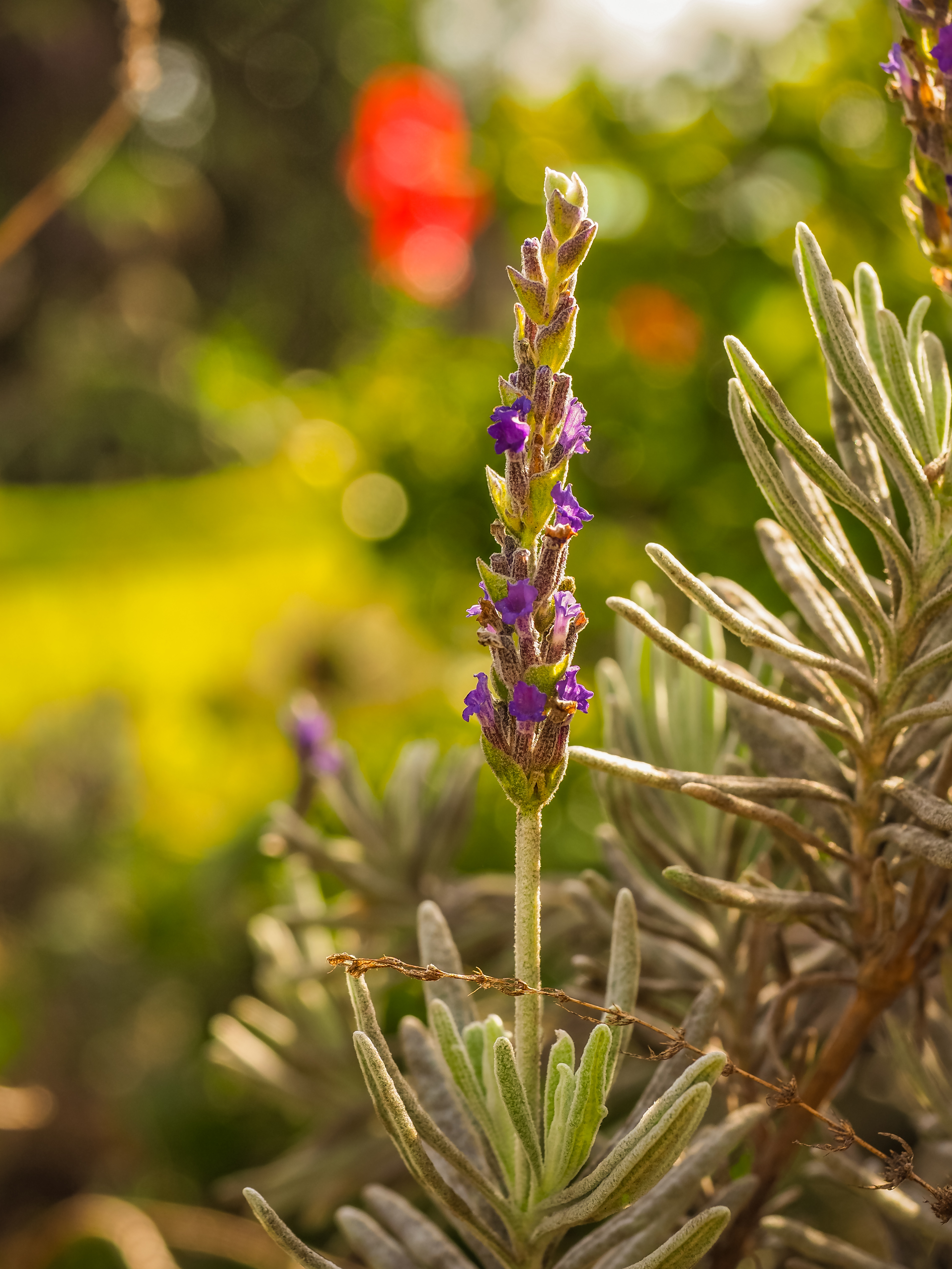Woolly lavender
(Lavandula lanata)

Description
Lavandula lanata, the woolly lavender, is a species of flowering plant in the family Lamiaceae, native to southern Spain. An evergreen dwarf shrub growing to 1 m (3.3 ft) tall and broad, it is noted for the pronounced silver woolly hairs on its leaves, whence the Latin specific epithet lanata. The deep violet purple flowers are borne on narrow spikes, and give off the familiar lavender scent. Lavandula lanata is cultivated in temperate zones for its attractive appearance and fragrance.It is hardy in mild and coastal areas, tolerating temperatures down to about −5 °C (23 °F), but preferring a warm, sheltered location in full sun. It has gained the Royal Horticultural Society’s Award of Garden Merit. The genus includes annual or short-lived herbaceous perennial plants, and shrub-like perennials, subshrubs or small shrubs. Leaf shape is diverse across the genus. They are simple in some commonly cultivated species; in other species, they are pinnately toothed, or pinnate, sometimes multiple pinnate and dissected. In most species, the leaves are covered in fine hairs or indumentum, which normally contain essential oils. Flowers are borne in whorls, held on spikes rising above the foliage, the spikes being branched in some species. Some species produce colored bracts at the tips of the inflorescences. The flowers may be blue, violet or lilac in the wild species, occasionally blackish purple or yellowish. The calyx is tubular. The corolla is also tubular, usually with five lobes (the upper lip often cleft, and the lower lip has two clefts). Lavandula (common name lavender) is a genus of 47 known species of flowering plants in the mint family, Lamiaceae. It is native to the Old World and is found in Cape Verde and the Canary Islands, and from Europe across to northern and eastern Africa, the Mediterranean, southwest Asia to India. Many members of the genus are cultivated extensively in temperate climates as ornamental plants for garden and landscape use, for use as culinary herbs, and also commercially for the extraction of essential oils.The most widely cultivated species, Lavandula angustifolia, is often referred to as lavender, and there is a color named for the shade of the flowers of this species. Lavender has been used over centuries in traditional medicine and cosmetics, and "limited clinical trials support therapeutic use of lavender for pain, hot flushes, and postnatal perineal discomfort."
Taxonomic tree:







